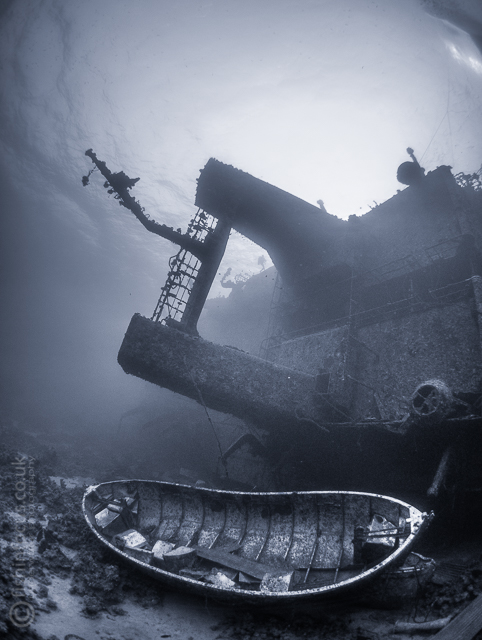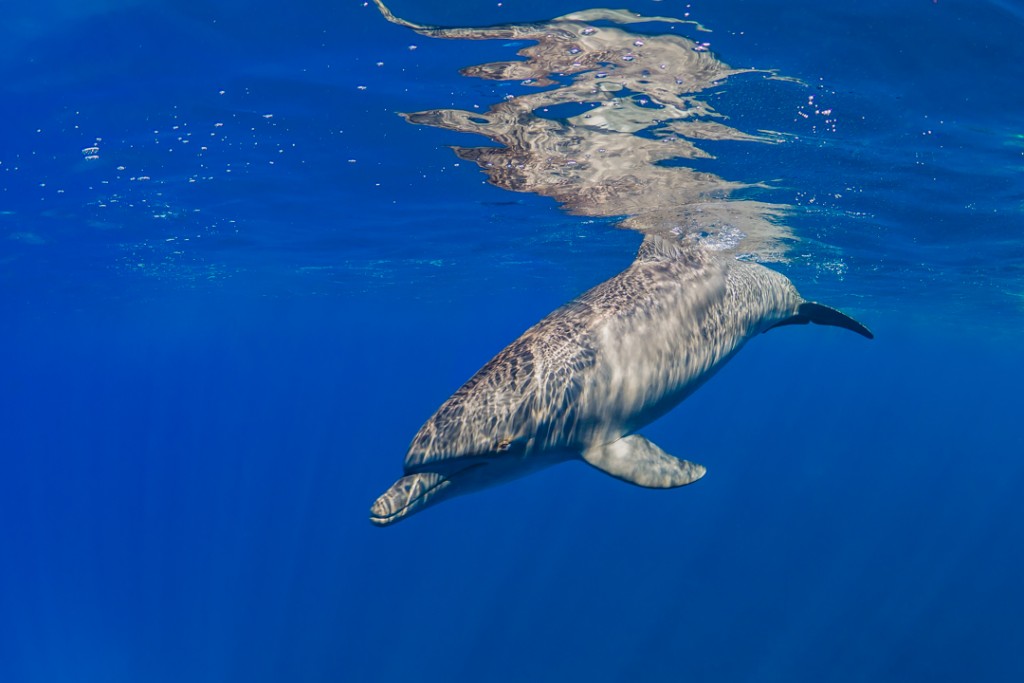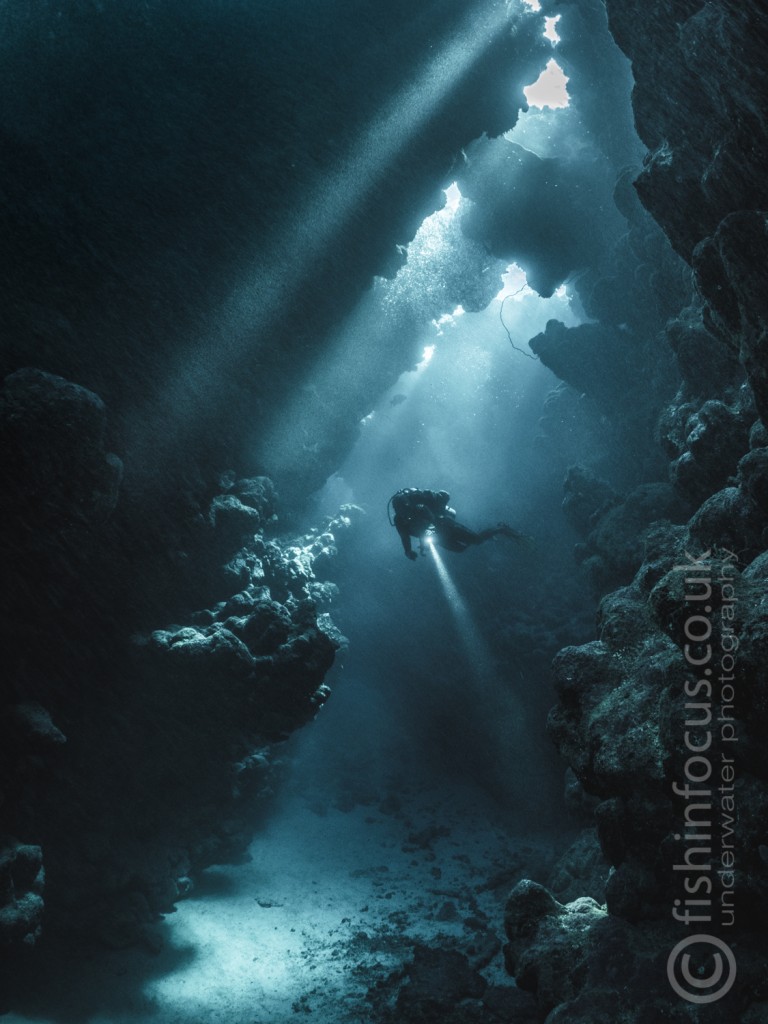News
Scubaverse Underwater Photographer Interview: Mario Vitalini

In an ongoing series, Scubaverse.com’s Underwater Photography Editors Nick and Caroline Robertson-Brown talk to underwater photographers from around the world that they admire.
This week’s interview is with UK-based tour operator Scuba Travel’s new resident underwater photo pro, Mario Vitalini.
[hr style=”single”]
 My name is Mario Vitalini, and photography is in my blood. I was born in Colombia some forty odd (cough) years ago. My father was a professional photographer and I grew up in his studio playing between tripods lights and large format cameras. I trained as graphic designer and worked as an art director for a few years, but the lure of the sea was too strong and I soon became a dive instructor and never looked back.
My name is Mario Vitalini, and photography is in my blood. I was born in Colombia some forty odd (cough) years ago. My father was a professional photographer and I grew up in his studio playing between tripods lights and large format cameras. I trained as graphic designer and worked as an art director for a few years, but the lure of the sea was too strong and I soon became a dive instructor and never looked back.
It was only a matter of time before I got hold of a Nikkonos camera and started taking photos underwater. As a dive instructor, I soon found myself working in Egypt where for some time I combined my job as a liveaboard guide with a video rig filming customers on the trips.
The passion for underwater photography was never far away and when together with my now wife we moved to the UK, and I found a job with one of the major underwater photography equipment retailers. This allowed me to get my hands on a huge range of equipment, which I tried on many trips, and helped pinpoint their strengths and weakness.
I left my job in retail some four years ago and started my own company teaching underwater photography on 1:1 basis to many enthusiastic divers. I decided to focus on 1:1 teaching as you get to see a real improvement in the students. There are no compromises as the course is totally focused on that individual. It’s really rewarding to see the speed at which people improve in a single day. Now I’m looking to take that ethos to a broader group. Think personalised content in a relaxed environment of fellow divers who are all looking to bring their own standard up.
[hr style=”single”]
N&C: How did your underwater photography start?
MV: Seeing my lifelong passion for photography combine with my then newfound passion of diving (somewhere in the 80s). My father gave me a second hand Nikkonos camera when I was a relatively new diver. I first used it on a trip to Cocos. Stan Waterman happened to be on that trip – wow, what an inspiration to follow your dreams. Without any formal training , the results were not very good back then, but that only inspired me to learn the differences between shooting on land and underwater.

N&C: What is your favourite u/w camera equipment (past & present) & why?
MV: If we go back to film days, I have very good memories of my old Nikkonos 3. It’s simplicity and complete lack of electronics meant you had to learn to read the ambient light and to control your flashguns if you wanted to get any decent results. It also was in many ways flood resistant. If there was a leak, you just had to rinse it thoroughly and let it dry before loading another roll of film and carry on shooting.
Nowadays I’m a big fan of the mirrorless revolution. It’s exciting! These cameras are getting very close in image quality to what you can achieve with much, much more expensive, high end DSLR options. There are a few areas where there is still a noticeable difference but overall they are an excellent option. Low end and mid range DSLRs are like for like in terms of image quality. I currently use an Olympus OMD EM1 and love how practical it is to travel with a smaller, lighter set up.
N&C: What would be your advice to anyone new to underwater photography?
MV: There are a couple of things I would say to anyone looking to start to take pictures underwater. First of all, get your buoyancy spot on. When you are taking pictures underwater your focus is on the view finder, and you positioning should be second nature. Good buoyancy is the most important skill in underwater photography.
When it comes to choosing your kit, you should always ask yourself the question: Are you diving to take pictures or taking pictures while diving?
When you dive with a big photo set up (DSLR/Mirrorless, strobes, dome ports etc.) your get in the water to take pictures. If you enjoy diving and want to take pictures, a big system will only get in your way. You’ll save money in the long term by getting proper advice based on your personal goals.
Finally, remember that a great camera on land is not necessary a great camera underwater. The housing, accessories and ability to access functionality underwater all massively change the options. And few online review sites will cover these specific aspects.

N&C: What, or who, has been your single biggest inspiration for your underwater photography?
MV: I grew up watching Jacques Cousteau documentaries and I would say he is responsible for my love for the sea. Combined with my upbringing in a photographic environment I think it was only a matter of time before I got involved in underwater photography. Today I love what Keri Wilk does with macro and Alex Mustard and David Doubilet are both incredible masters of managing lighting. The colours are spectacular as well as creative images.
N&C: What are your boundaries on post-editing image manipulation?
MV: I do not have any problems with post processing. For me photography is an art form and as such it should not be restricted. However, I try to always show a real representation of the environment I’m photographing. Sometimes a great shot is ruined by a small element in the wrong place and then I do not have a problem retouching it. But when it comes to competitions it’s worth checking the rules and sticking to them. Some of the images I’m proudest of, and that have also done well in competitions, have had tonal manipulations. I love playing with black and whites, monotones and desaturations. These enhance an atmosphere that was there in the shot at the time, rather than adding or removing anything artificial.
RAW files require some amount of post processing and I do not think it’s realistic to completely ban photo editing. Tonal corrections and white balance, contrast and general exposure are necessary to get the most out of your RAW images. BUT: you should always aim to start with the best possible image.

N&C: Where is your favourite dive location, and is it for the photography?
MV: I’ve been asked that question many times and I do not think I have a straight answer. I have been lucky to visit many destinations and each one has its own attraction, from the crazy macro encounters of Lembeh or Dumaguete, straight to the mind blowing diversity of Komodo or the sharks of Socorro and Palau. I grew up diving in the Caribbean and I will always have a soft spot for it.
If I have to choose a single destination it would probably be the Red Sea. Its not by chance I spent more than 5 years working as a dive guide there – I’ve dived it from north to south and every inch of it captivates me. There is always something special regardless of the season: great wrecks, beautiful reefs, pelagics and reef dwellers, generally good underwater conditions and great weather year around… what’s not to love? No surprise the Red Sea is one of the top destinations for divers from all over the world.

N&C: What are you views on marine life manipulation, moving subjects?
MV: In very simple terms, NOT ACCEPTABLE. This issue has been in the spotlight for some time now and unfortunately in many parts of the world it is something that often happens. As underwater photographers we have a responsibility to correct this bad behaviour. I have to mention good buoyancy comes hand in hand here; no photo is worth harassing marine life or destroying the environment. Simply put, don’t be one of “those” photographers or as it’s known in my house “a selfish twat”.
N&C: What do you look for when you are making your images?
MV: When I get underwater with my camera system I’m open to whatever I can find. There is always something interesting to photograph. When I find a subject I always take a few shots “for the record”, but afterwards I tend to put my camera down and look at the subject trying to find a different way to photograph it, using the environment to enhance it or lighting and different techniques to isolate it. Always look for a different and unusual take. We’ve all taken fish ID shots. There’s nothing wrong with getting a few of those in the bag, but then push yourself to go a step further. It takes time for sure. But with the right guides and buddy, it’s not about how much of a site you see, rather what you do with what you find.
N&C: What motivates you to take u/w photos?
MV: As scuba divers we encounter incredible creatures and fantastic places. Photographing the journey is a way to share my passion for the sea and its secrets. I’m as much in love with the sea in all its challenging and miraculous ways as I was as a 6 year old watching Cousteau in my parent’s living room in Colombia. I’ve just never seen it all – or enough!
N&C: If you could photograph any one thing/place what or where would that be?
MV: Instead of getting smaller, my wish list grows every day. If I had to pick a single subject it would be a blue whale. These magnificent animals are so impressive and very rarely photographed underwater. It would be an absolute dream to have the chance to photograph one. And if I had to pick a location it would be a close call between Galapagos and Silfra fissure. Damn… that’s two. Well, you get the idea. The list never gets shorter!
[hr style=”single”]
For more from Mario, visit www.fishinfocus.co.uk or www.facebook.com/fishinfocus.
To find out more about the liveaboard photo workshops that Mario runs for Scuba Travel click here.
Gear News
Introducing the TR-80, IR-50 and CS-30 Regulators from DYNAMICNORD

Whether you are a beginner or a professional diver – with the three new main regulators from DYNAMICNORD, everyone will find their favourite regulator. They all look super stylish.
Excellent performance with the TR-80
Quality and performance are the be-all and end-all for regulators. It is not for nothing that the TR stands for Tec Reg. The innovative design of the TR-80 guarantees absolute reliability – even in ice-cold waters.

Perfect breathing effort at 0.8 J/l / certified for diving in waters below 10 degrees / structural design made of solid brass for best cold protection / membrane-compensated design with dry seal of the first stage / reduced exhalation effort thanks to optimized exhalation membrane and bubble deflector / adjustable Venturi (dive/predive) and adjustment knob for individual inhalation comfort / innovative design of the front cover prevents free-flow in strong currents or when diving with scooters / design made of sandblasted brass, matt chrome finish / 2 HP and 4 LP outlets / mouthpiece made of high-quality, anti-allergic silicone for maximum comfort.


Amazing underwater adventures with the IR-50
The IR-50 is the top regulator for advanced and experienced divers. Natural breathing is the essence of this regulator.

Ideal breathing effort at 0.8 J/l /certified for diving in waters below 10 degrees / compensated membrane / adjustable venturi (dive/predive) and adjustment knob for individual inhalation comfort/ outlet valve and deflector for minimum exhalation effort and reduction of bubbles on the face / design made of sandblasted brass, matt chrome finish / 2 HP and 4 NP outlets / mouthpiece made of high-quality, anti-allergic silicone for maximum comfort.


The Workhorse – our CS-30
For diving centres and diving beginners – the workhorse stands for strong construction, reliability and robustness. Perfect for your training.

Optimal breathing effort at 0.8 J/l /recommended for diving in waters above 10 degrees / non-compensated piston / adjustable venturi (dive/predive) / outlet valve and deflector for minimum exhalation effort and reduction of bubbles on the face / design made of sandblasted brass, matt chrome finish / 1 HP and 3 NP outlets / mouthpiece made of high-quality, anti-allergic silicone for maximum comfort.


Octopus OP-30
The OP-30 is the ideal addition to all DYNAMICNORD regulators. It is identical in construction to the CS-30.

The TR-80, IR-50, CS-30 (DIN & INT) regulators and the Octopus OP-30 are available from DYNAMICNORD dealers and in the online store.
DYNAMICNORD – Your Outdoor Companion.
Marine Life & Conservation
Paul Watson Released as Denmark Blocks Japan’s Extradition Bid

Renowned anti-whaling activist Paul Watson has been released from custody in Greenland after spending five months in detention. Denmark’s Justice Ministry rejected Japan’s request for his extradition, citing insufficient guarantees that his time already served in custody would be credited against any potential sentence.
The 74-year-old Canadian-American was arrested on July 21 in Nuuk, Greenland’s capital, when his ship docked to refuel. His arrest was based on a 2012 Japanese warrant related to a 2010 encounter in Antarctic waters. Japan alleged Watson obstructed operations and caused damage to a whaling research ship during efforts to disrupt illegal whaling. Watson has consistently denied these claims, maintaining his commitment to marine conservation.
Denmark, which oversees extradition matters for Greenland, concluded that while the legal conditions for extradition were met, the lack of assurances from Japan regarding time-served credit made extradition untenable.
In a video shared by his foundation, Watson expressed gratitude and relief, saying, “After five months, it’s good to be out… and good to know they’re not sending me to Japan.” He added that the most difficult part of his time in custody was being separated from his two young sons.
Watson is a pioneering figure in marine conservation, known for founding the Captain Paul Watson Foundation in 2022 after decades of activism with the Sea Shepherd Conservation Society. His bold efforts to defend marine life have earned him widespread support, including from celebrities and conservationists. His work has also been featured in the acclaimed reality TV series Whale Wars.
Watson’s lawyer, Jonas Christoffersen, praised the decision, stating, “We are happy and relieved that Paul Watson is now free.” He added that Watson is eager to reunite with his family and continue his vital work.
The arrest occurred while Watson’s vessel, the M/Y John Paul DeJoria, was en route to the North Pacific with a team of 26 volunteers to intercept a Japanese whaling ship. His foundation described the arrest as politically motivated and emphasized that Watson’s actions were focused on ending illegal whaling practices.
Japan resumed commercial whaling in 2019 after leaving the International Whaling Commission, asserting that whale meat is a cultural tradition. Conservationists, however, continue to challenge these practices, highlighting their impact on marine ecosystems.
Despite the challenges, Watson remains steadfast in his mission to protect marine life and bring attention to whaling practices. His dedication to ocean conservation has made him a globally respected advocate for the environment.
-

 News2 months ago
News2 months agoIconic SS United States to become the World’s Largest Artificial Reef
-

 News3 months ago
News3 months agoBook Review – 52 Assignments: Underwater Photography
-

 Gear News3 months ago
Gear News3 months agoDYNAMICNORD – New German diving brand enters the British market
-

 News3 months ago
News3 months agoExploring Cenote El Pit: A Diver’s Dream
-

 Gear News3 months ago
Gear News3 months agoTry BARE drysuits (and maybe even win one!) this Friday with Sea & Sea at North West Dive Fest
-

 Marine Life & Conservation3 months ago
Marine Life & Conservation3 months agoBook Review: Coral Triangle Cameos
-

 Blogs2 months ago
Blogs2 months agoDive the Egyptian Red Sea this Autumn with Regaldive
-

 News3 months ago
News3 months ago2024 Ocean Art Underwater Photo Competition Announced













